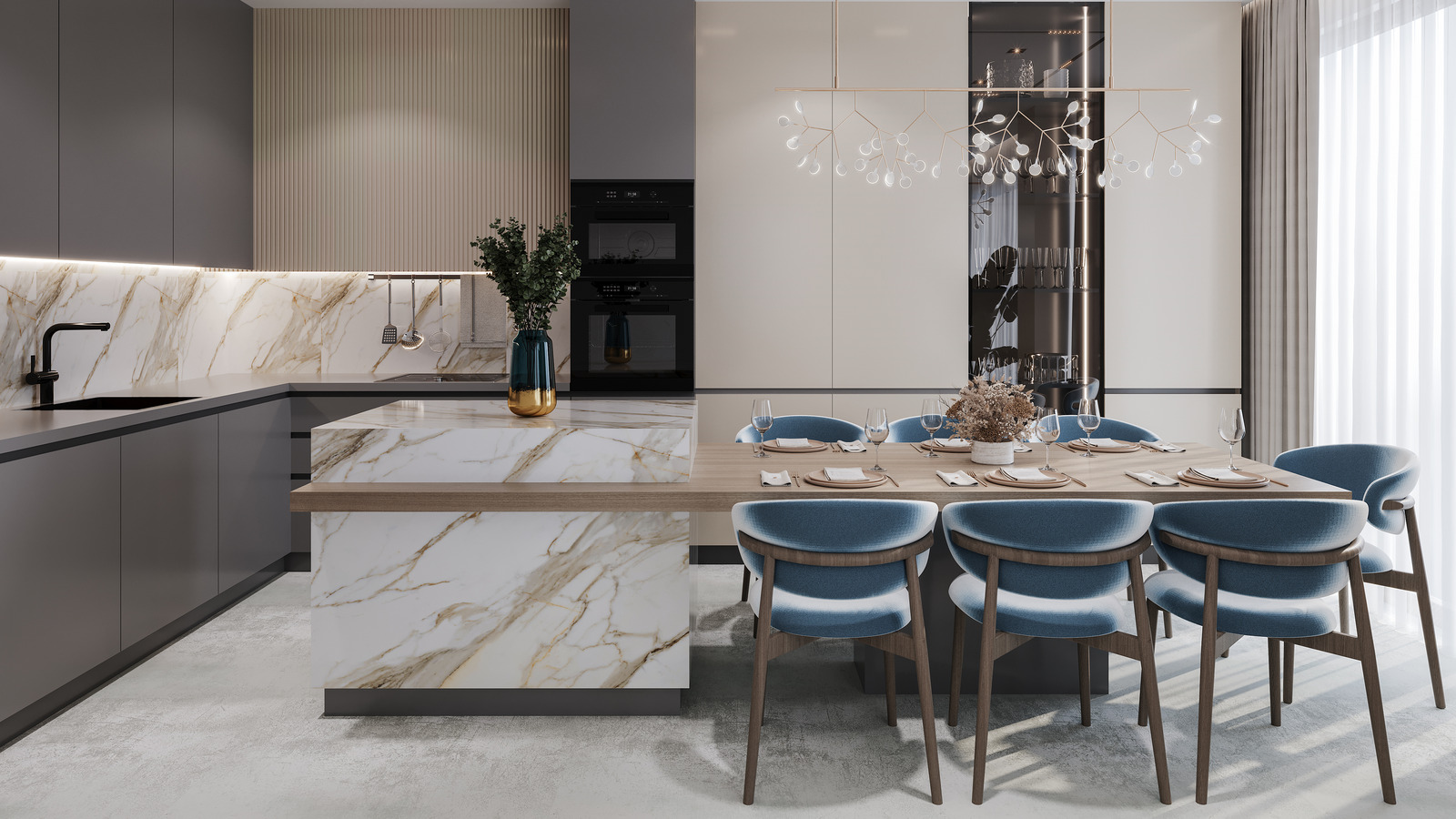Want to give your kitchen a stylish and functional upgrade? Kitchen table islands might be the perfect solution! Whether you’re short on space, love hosting, or want to add some pizzazz, we’ll guide you through creating the ultimate cooking and dining destination.
Why a Kitchen Island Table Is Your New Best Friend
Kitchen table islands are more than just counter space; they’re the heart of your home! This multi-functional hub is perfect for cooking, eating, and hanging out. Plus, it adds valuable storage and can even squeeze in appliances you wouldn’t have room for otherwise.
Finding Your Perfect Island Match
Your ideal kitchen table island depends on your unique space and lifestyle. Let’s explore some popular options:
| Type of Island | Description | Best For… |
|---|---|---|
| Built-In with Extended Table | Seamlessly extends your countertop for a dedicated dining area. | Larger kitchens; families who prioritize sit-down meals. |
| Freestanding | Movable feast! Roll it aside for more space or reposition for different activities. | Smaller kitchens; those who love flexibility. |
| Convertible | Transforms to fit your needs with drop-down leaves or extendable surfaces. | Space-savers; multi-purpose kitchens. |
| Small | Compact yet mighty, perfect for a breakfast nook or extra prep space. | Tiny kitchens; apartments. |
Before You Shop: Design Must-Haves
Before you fall in love with a gorgeous island, consider these practicalities:
- Size and Flow: Measure twice, buy once! Aim for at least 3 feet of clearance on all sides.
- Storage Savvy: Drawers, shelves, wine racks, open shelving – the options are endless.
- Seating Capacity: How many people do you want to fit comfortably?
- Durability is Key: Kitchens see a lot of action, so choose durable materials.
Material Magic: Popular Choices
- Wood: Warm, inviting, and adds character, but needs regular oiling or sealing.
- Marble: Elegant but requires extra care to prevent staining.
- Granite: Known for its durability and heat resistance.
- Quartz: Super low-maintenance, comes in various colors and patterns, and resists scratches and stains.
Level Up Your Island Game: Extra Features
- Wheels: Want the option to move your island? Just make sure the wheels lock securely.
- Built-In Appliances: Consider integrating a wine fridge, dishwasher, microwave, or cooktop.
- Lighting is Everything: Pendant lights or recessed lighting brighten your workspace and create a cozy ambiance.
Styling Tips for an Island That Pops
- Contrast is Cool: Choosing an island in a contrasting color or material to your countertops adds visual interest.
- Statement Lighting: Pendant lights hung above your island create an instant focal point.
- Comfortable Seating: Choose stools or chairs that complement the island’s height and style.
Can a Kitchen Island Be a Table?
Absolutely! A kitchen island table is a fantastic way to maximize functionality, especially in limited spaces. You have two main options:
- Built-in Island Tables: Offer a permanent setup and can be customized to match your kitchen’s style, even integrating sinks or appliances.
- Freestanding Island Tables: These versatile pieces can be moved around as needed for dining, prepping food, or extra counter space.
Here’s a comparison to help you decide:
| Feature | Built-in Island Table | Freestanding Island Table |
|---|---|---|
| Cost | More expensive | More affordable |
| Customization | Highly customizable | Limited customization |
| Stability | Very sturdy | Moderately sturdy |
| Flexibility | Fixed in place | Can be moved |
Ultimately, the best choice depends on your budget, style, and how you envision using your kitchen space.
Is it Cheaper to Buy or Build a Kitchen Island?
The age-old question: buy or DIY? There’s no one-size-fits-all answer. It depends on your needs, budget, and handiness with tools.
Buying a Kitchen Island:
Pros:
- Affordable: Prefabricated islands are often budget-friendly.
- Variety: You’ll find diverse styles, colors, and sizes.
- Easy Setup: Most pre-made islands come assembled or require minimal effort.
Cons:
- Limited Personalization: You might not find the perfect island that ticks all your boxes.
- Variable Quality: Some pre-made islands may have less durable materials.
Building a Kitchen Island:
Pros:
- Customization: Control over the design, size, materials, and features.
- Durability: Choose high-quality materials that will last.
- Potential Value Boost: A custom-built island can be a selling point for your home.
Cons:
- Costly: Building can get expensive quickly, especially with high-end materials.
- Requires Skills: You’ll need carpentry and possibly electrical know-how.
- Time-Consuming: Be prepared to invest significant time.
Cost Factors:
- Size: Larger islands generally cost more.
- Material: Luxurious materials like granite cost more than laminate.
- Features: Extras like a sink or built-in appliances increase the cost.
The Bottom Line:
Buying is usually more affordable and convenient. However, if you crave customization and have the skills, building your own can be rewarding.
If you are looking for more island-with-sink related content, click here.
How Close Can a Kitchen Table Be to an Island?
When placing a kitchen table near your island, experts often suggest a minimum clearance of 42 inches. This provides a comfortable walkway for one person. However, if multiple cooks will be in action, increase that clearance to around 48 inches.
Also, consider your oven door’s swing path. If it opens into the walkway, add an extra 6 inches to your minimum clearance.
Finally, remember comfortable seating! Aim for a minimum of 30 inches of space around the table to ensure everyone has enough legroom.
Remember, these are just guidelines. The ideal distance depends on your kitchen’s layout. If you have a smaller kitchen, consider a movable or convertible island for added flexibility.
- Kitchen Counter Corner Ideas: Style Your Awkward Angles Now - December 31, 2025
- Best Finish for Butcher Block Countertops: Choosing the Right Option - December 30, 2025
- Seal for butcher block: Find the best food-safe finish - December 29, 2025










